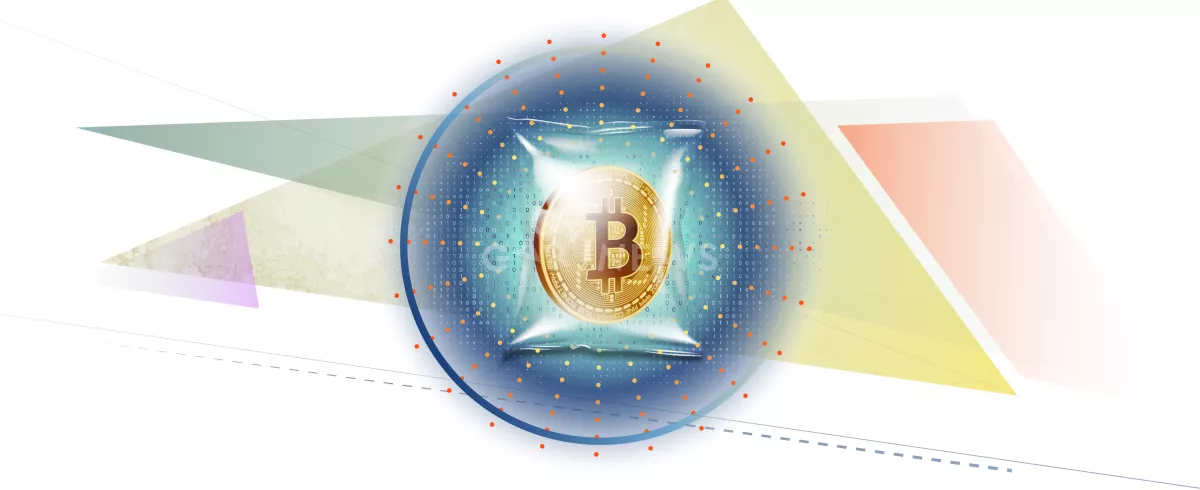What are wrapped tokens and why do you need them?

Due to the impossibility of using a token based on one blockchain in applications built on another blockchain, cryptocurrency owners need a wrapped token. In this article, we will tell you about a wrapped token, its mechanism, possible applications, “pitfalls”, how it differs from a stablecoin, and what cross-chain bridge technology has to do with it.
On this page
What is a wrapped token?
A wrapped token is a “copy” of a crypto coin issued in another blockchain on the security of the original. The ratio of such “copies” is 1:1.
Where do wrapped tokens come from?
To become wrapped, an ordinary token must be moved to special storage. Then the wrapped token will be issued by using a special smart contract. For example, in order to create WBTC, the user has to transfer BTC to the specified address in the Bitcoin network. Only after that will WBTC be issued and transferred to the address specified by the user in the Ethereum network. Notably, the storage must be custodial and comply with the requirements. Also, it is worth mentioning the fact that WBTC, in this case, is issued on the Ethereum network as a regular erc20 token, respectively, it can be used with existing services: create liquidity pools on DEXes and trade a token equivalent to bitcoin against stablecoins on ethereum (USDT/USDC/DAI), farm tokens in staking pools, implement liquidity mining without selling bitcoin, use WBTC as collateral for secured loans (MakerDAO), or put in lending pools (Compound Finance).
Is a stablecoin a wrapped token?
No, it’s not. A stablecoin is pegged to another (fiat) currency, and in the case of a wrapped token, we are talking about the fact that the token is not used on the native blockchain platform. In order to use it, you need to “wrap” it – that is, to issue its copy on the platform you need to work with.
Why do you need a wrapped token?
Thanks to a wrapped token, you can trade on decentralized exchanges that do not support the original asset. Over time, as the market of decentralized applications has evolved, it has become necessary for users to transfer liquid assets between networks. For example, to get a loan in stablecoins, you can leave a deposit. However, since the Tron or Ethereum ecosystems don’t support bitcoin, this is where the wrapped bitcoin comes in handy. Also, the wrapped token dramatically simplifies the work of exchanges, services, and crypto wallets, since in case of its use, there is no need for setting individual nodes. Also, since the wrapped token has the same value as the original, it can serve as a loan guarantee or be used for profitable farming. Thanks to the wrapped token, there is no need to use centralized services and exchanges. In addition, wrapped tokens are used for governance and access to staked tokens. We may take Bancor as an example, where users can put their BNT network token into the liquidity pool and receive VBNT in return, with which they can vote, sell, and access staked funds. Also, in Polkadot, a user can stake their DOT in Acala – get LDOT in return and have liquidity while the original asset is staked.
Why do you need a cross-chain bridge, and what is it?
Cross-chain bridges are a set of automated smart contracts with which you can transfer a token from one network, putting an asset in a special storage, to another, creating a wrapped token in it. Bridges are needed to ensure compatibility between networks that are isolated from each other. This is very convenient and allows users to save time and use their assets in different ecosystems.
Downside
As in any other sphere, there are dangerous aspects in the use of wrapped tokens and cross-chain bridges. One such danger is a potential vulnerability in the code. This is how Wormhole was hacked. The attackers managed to withdraw $325 million due to a bug on GitHub. Another dangerous point is centralization. If the keys that give access to the original storage fall into the wrong hands, the asset will be transferred to a third-party address, and the deposit will not be returned. That’s how the scammers managed to withdraw crypto worth 625 million dollars from Axie Infinity and its Ronin bridge.
We hope this information will help you better understand a wrapped token and improve your knowledge about blockchain and cryptocurrencies.
The content on The Coinomist is for informational purposes only and should not be interpreted as financial advice. While we strive to provide accurate and up-to-date information, we do not guarantee the accuracy, completeness, or reliability of any content. Neither we accept liability for any errors or omissions in the information provided or for any financial losses incurred as a result of relying on this information. Actions based on this content are at your own risk. Always do your own research and consult a professional. See our Terms, Privacy Policy, and Disclaimers for more details.

























